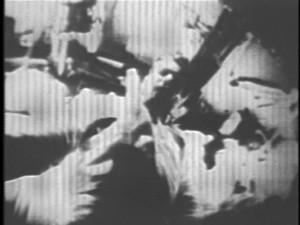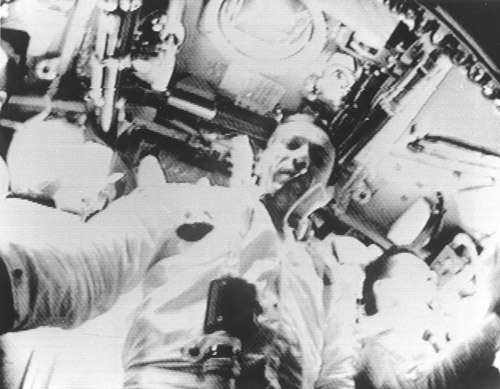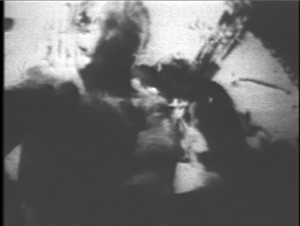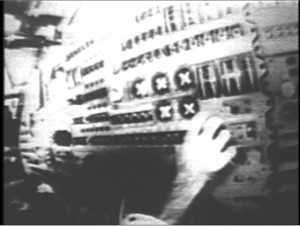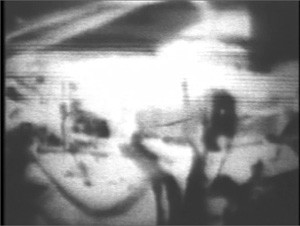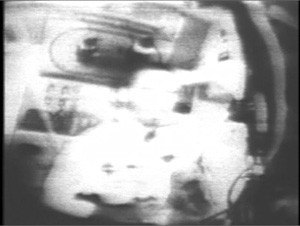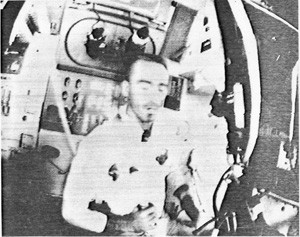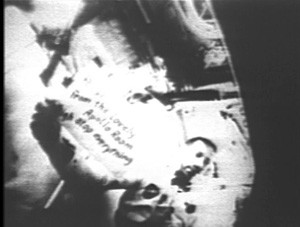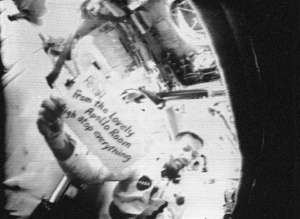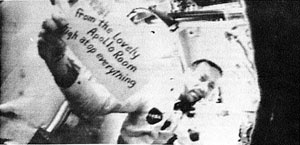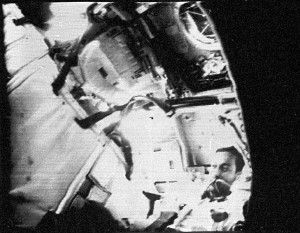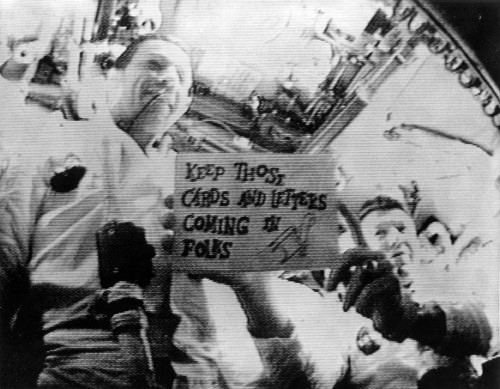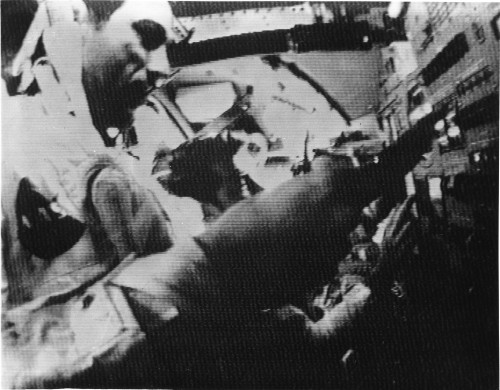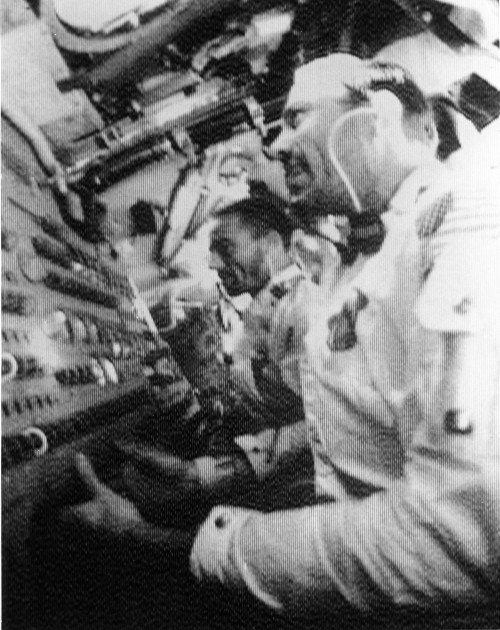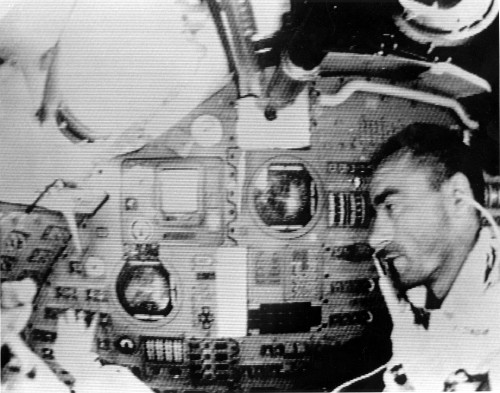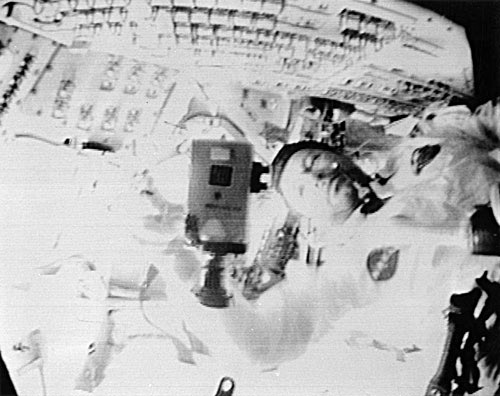Images from: 1. Bruce Withey, 2. Bill Wood, 3. Dick Nafzger, 4. Hamish Lindsay.
|
Bruce Withey, who was at Honeysuckle Creek during Apollo 7, has provided images of slow scan TV frames from Apollo 7 TV. They were probably photographs taken of the Fairchild slow scan monitor at either the Merritt Island Launch Area (MILA) or Corpus Christi (TEX) tracking stations. The comparisons below illustrate the differences between the original slow scan images (at right) and the the best scan converted recordings of the TV available today. This is even more remarkable, given that Bruce’s versions are only photocopies (1968 vintage) of the photos. To be fair, the only known existing recordings are poor quality kinescopes. A similar, though less dramatic, difference is evident in the Apollo 9 and Apollo 11 scan converted TV. In each comparison, the lower quality scan converted image is at left. Click on each for larger versions. |
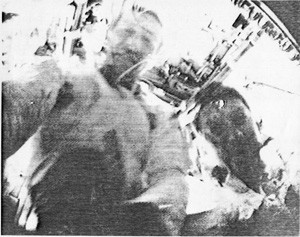 |
|
|
Donn
Eisele (centre) and Wally
Schirra (right) during the first TV broadcast. Shortly afterwards, the camera was moved to show a view of Lake Pontchartrain and New Orleans. |
|
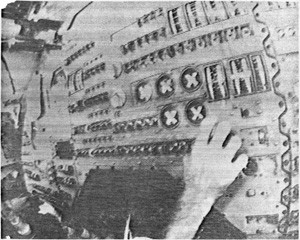 |
|
|
During the second broadcast, on 15th
October 1968, Walter Cunningham takes viewers on a tour of
the cockpit. |
|
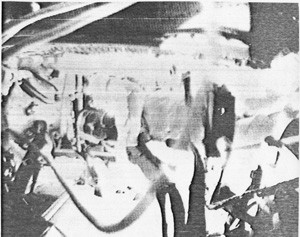 |
|
|
Donn
Eisele (?) floats sideways in
this view from the second broadcast. |
|
Converted TV screenshots and SSTV scans by Colin Mackellar.
The left hand scan-converted images are screen-shots from
the Spacecraft Films excellent Apollo 7 DVD set.
(This video was sourced from the Johnson Space Center.)
Apollo 7 Slow Scan TV as seen at Goldstone
|
Another of Bill’s photos, taken a moment or two after, was featured in the November 1 1968 MSFN Technical Information Bulletin – sent out to all the tracking stations. |
|
Another of Bill’s photos taken during the first Apollo 7 TV broadcast. Donn Eisele is seen here. With thanks to Bill Wood – May 2007. |
Photos of the Apollo 7 slow scan TV preserved by Dick Nafzger
For each of these, a frame of the best known scan-converted kinescope recording of that scene is presented first for comparison.
The slow scan original is below it.
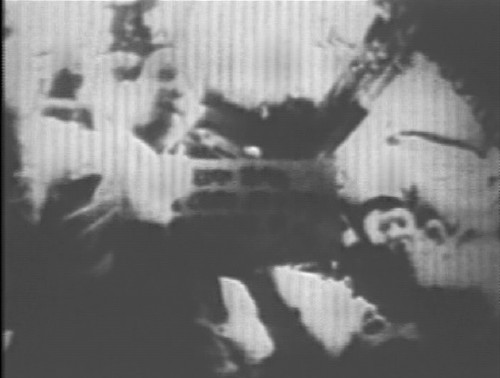 |
Near the start of the first Apollo 7 TV
broadcast. Donn Eisele and Wally Schirra with the famous “Keep Those Cards and Letters Coming in Folks” card. Walt Cunningham is operating the camera. Medium version, larger version (even larger on request). |
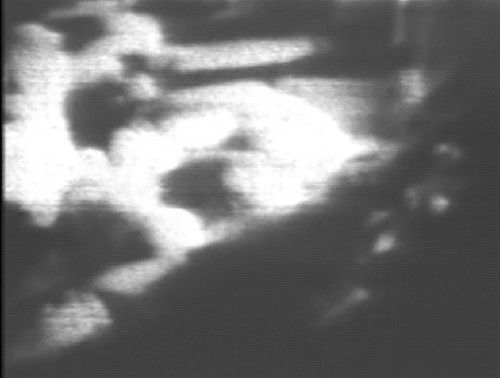 |
Donn Eisele, towards the end of the first Apollo 7 TV
broadcast. Medium version, larger version (even larger on request). |
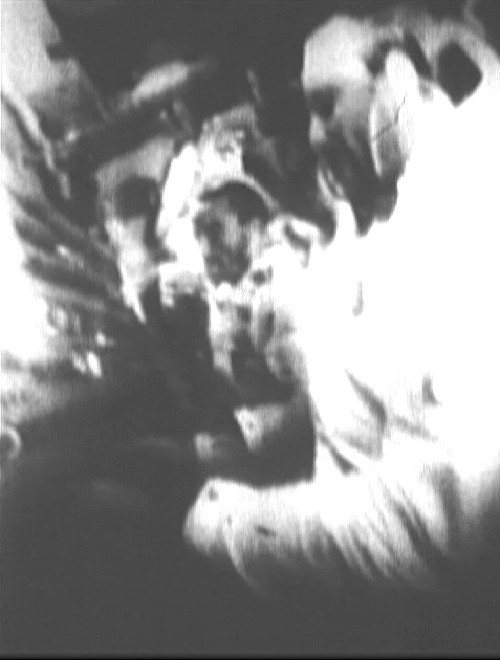 |
Walt Cunningham (left) and Donn Eisele during the fifth Apollo 7 TV broadcast. NASA photo 108-KSC-68P-461 / 68-H-974. Medium version, larger version (even larger on request). |
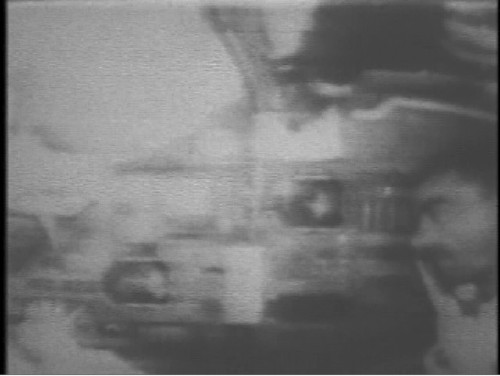 |
During the third Apollo 7 broadcast, on October 16, 1968, Donn Eisele (hand visible at left) points out the manual attitude control system switches while Walter Cunningham watches. Slow scan picture received at MILA. NASA photo 108-KSC-68P-454 / 68-H-967. Medium version, larger version (even larger on request). |
Dick Nafzger’s photos scanned by Colin Mackellar, May 2011.
Slow scan TV as seen at MILA.
Hamish Lindsay preserved this copy of NASA photo 108-KSC-68P-459. The text on the back of the photo reads: “Apollo 7 Commander Walter M, Schirra, Jr., reaches for on-board motion picture camera floating in cabin’s weightless environment during today’s television transmission in the 90th revolution. The transmission was received at the Manned Space Flight Network Tracking Station at the Kennedy Space Center.” Scan by Colin Mackellar. |
